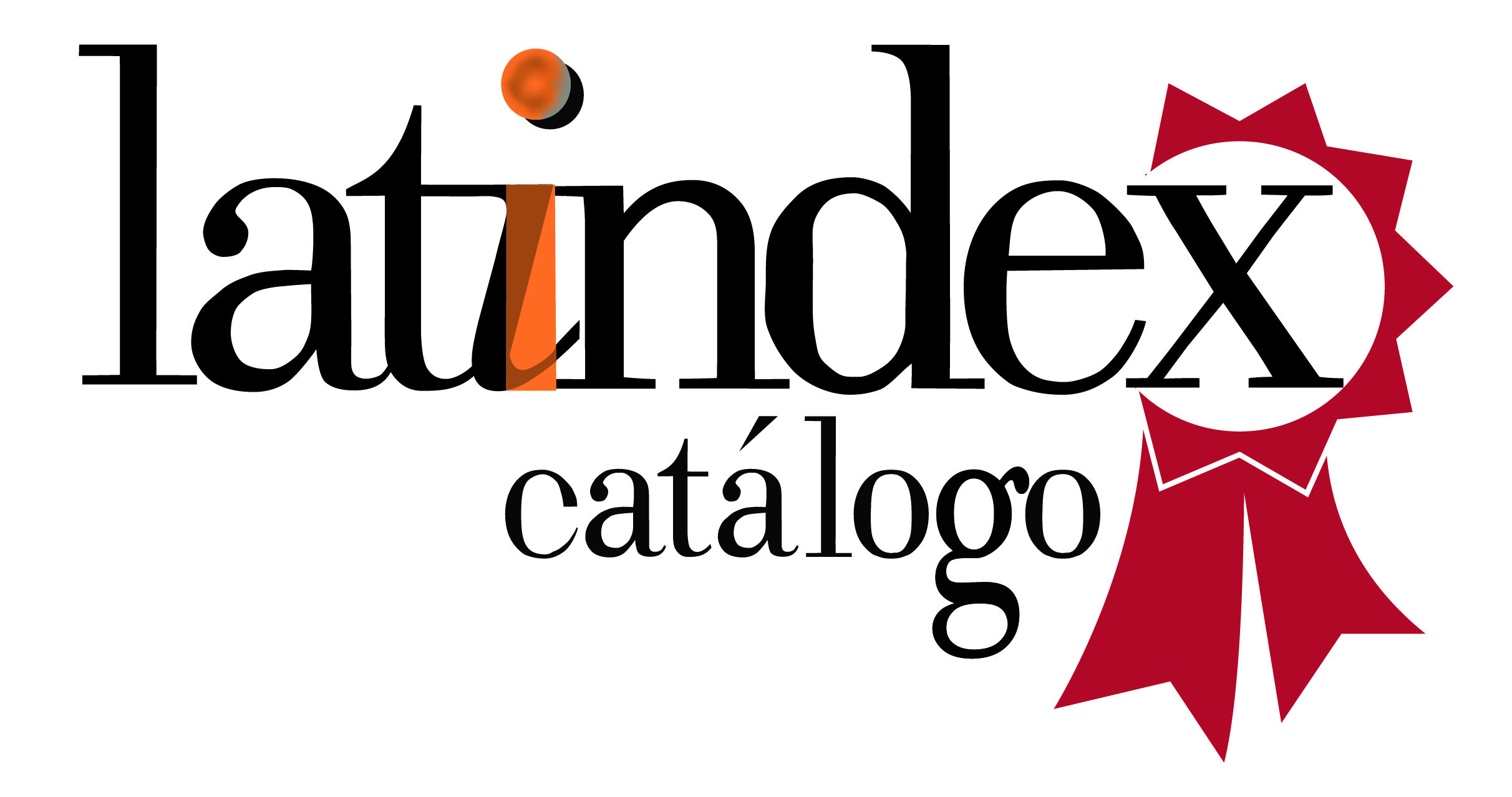Diagnostic performance of eleven indicators of insulin resistance in a sample of Peruvians
DOI:
https://doi.org/10.52379/mcs.v7i3.292Keywords:
resistencia a la insulina, glucosa, trigliceridos, indice de masa corporalAbstract
Introduction: Insulin resistance (IR) is one of the main causes of chronic disease. Early detection is essential, which is why it is important to study more affordable and less expensive methods, such as biomarkers. Objective: To determine the diagnostic accuracy of 11 biomarkers of IR in a sample of Peruvian residents. Method: diagnostic tests. Secondary Database Analysis of the PERU-MIGRANT Study. To measure RI, a homeostatic model evaluation (HOMA-IR) ? 2.8 was used as a reference. Biomarkers were based on the lipid ratio, visceral lipid indicators, indicators of triglycerides and glucose (TyG), and indicators of abdominal waist. For precision, the receiver operating characteristic curve and area under the curve (AUC) with their respective 95% confidence intervals (95%CI) were used. Results: A total of 938 participants were studied. The prevalence of IR was 9.91%. In relation to the ROC analysis, the TyG index – body mass index (TyG – BMI) had the highest AUC, both in men: AUC=0.85 (0.81 - 0.90), cut-off=241.55; sens=92.5 (79.6 - 98.4) and sp=78.3 (73.9 - 82.2); as in women: AUC=0.81 (0.76 - 0.85), cut-off=258.77; sens=79.2 (70.3 - 86.5) and esp= 82.1 (78.0 - 85.8). Discussion: According to the data analyzed, the TyG-IMC index is the best indicator for measuring IR. It is a simple index that can be routinely used in clinical practice. Future prospective studies are needed to confirm its predictive capacity.
Downloads
References
Petersen MC, Shulman GI. Mechanisms of Insulin Action and Insulin Resistance. Physiol Rev. 2018;98(4):2133–223. https://doi.org/10.1152/physrev.00063.2017
Matulewicz N, Karczewska-Kupczewska M. Insulin resistance and chronic inflammation. Postepy Hig Med Dosw (Online). 2016;70(0):1245–58. URL.
Kim JK. Hyperinsulinemic-euglycemic clamp to assess insulin sensitivity in vivo. Methods Mol Biol. 2009;560:221–38. https://doi.org/10.1007/978-1-59745-448-3_15
Tam CS, Xie W, Johnson WD, Cefalu WT, Redman LM, Ravussin E. Defining insulin resistance from hyperinsulinemic-euglycemic clamps. Diabetes Care. 2012;35(7):1605–10. https://doi.org/10.2337/dc11-2339
Tang Q, Li X, Song P, Xu L. Optimal cut-off values for the homeostasis model assessment of insulin resistance (HOMA-IR) and pre-diabetes screening: Developments in research and prospects for the future. Drug Discov Ther. 2015;9(6):380–5. https://doi.org/10.5582/ddt.2015.01207
Wallace TM, Levy JC, Matthews DR. Use and abuse of HOMA modeling. Diabetes Care. 2004;27(6):1487–95. https://doi.org/10.2337/diacare.27.6.1487
Rogowicz-Frontczak A, Majchrzak A, Zozuli?ska-Zió?kiewicz D. Insulin resistance in endocrine disorders - treatment options. Endokrynol Pol. 2017;68(3):334–51. https://doi.org/10.5603/EP.2017.0026
Zhou M, Zhu L, Cui X, Feng L, Zhao X, He S, et al. The triglyceride to high-density lipoprotein cholesterol (TG/HDL-C) ratio as a predictor of insulin resistance but not of ? cell function in a Chinese population with different glucose tolerance status. Lipids Health Dis. 2016;15:104. https://doi.org/10.1186/s12944-016-0270-z
Kannel WB, Vasan RS, Keyes MJ, Sullivan LM, Robins SJ. Usefulness of the triglyceride-high-density lipoprotein versus the cholesterol-high-density lipoprotein ratio for predicting insulin resistance and cardiometabolic risk (from the Framingham Offspring Cohort). Am J Cardiol. 2008;101(4):497–501. https://doi.org/10.1016/j.amjcard.2007.09.109
Zhang L, Chen S, Deng A, Liu X, Liang Y, Shao X, et al. Association between lipid ratios and insulin resistance in a Chinese population. PLoS One. 2015;10(1):e0116110. https://doi.org/10.1371/journal.pone.0116110
Almeda-Valdés P, Bello-Chavolla OY, Caballeros-Barragán CR, Gómez-Velasco DV, Viveros-Ruiz T, Vargas-Vázquez A, et al. Índices para la evaluación de la resistencia a la insulina en individuos mexicanos sin diabetes. Gac Med Mex. 2018;154(Supp 2):S50–5. https://doi.org/10.24875/GMM.18004578
Er L-K, Wu S, Chou H-H, Hsu L-A, Teng M-S, Sun Y-C, et al. Triglyceride Glucose-Body Mass Index Is a Simple and Clinically Useful Surrogate Marker for Insulin Resistance in Nondiabetic Individuals. PLoS ONE. 2016;11(3):e0149731. https://doi.org/10.1371/journal.pone.0149731
Vasques ACJ, Novaes FS, de Oliveira M da S, Souza JRM, Yamanaka A, Pareja JC, et al. TyG index performs better than HOMA in a Brazilian population: a hyperglycemic clamp validated study. Diabetes Res Clin Pract. 2011;93(3):e98–100. https://doi.org/10.1016/j.diabres.2011.05.030
Guerrero-Romero F, Villalobos-Molina R, Jiménez-Flores JR, Simental-Mendia LE, Méndez-Cruz R, Murguía-Romero M, et al. Fasting Triglycerides and Glucose Index as a Diagnostic Test for Insulin Resistance in Young Adults. Arch Med Res. 2016;47(5):382–7. https://doi.org/10.1016/j.arcmed.2016.08.012
Sánchez-García A, Rodríguez-Gutiérrez R, Mancillas-Adame L, González-Nava V, Díaz González-Colmenero A, Solis RC, et al. Diagnostic Accuracy of the Triglyceride and Glucose Index for Insulin Resistance: A Systematic Review. Int J Endocrinol. 2020;2020:4678526. https://doi.org/10.1155/2020/4678526
Lee J, Kim B, Kim W, Ahn C, Choi HY, Kim JG, et al. Lipid indices as simple and clinically useful surrogate markers for insulin resistance in the U.S. population. Sci Rep. 2021;11(1):2366. https://doi.org/10.1038/s41598-021-82053-2
Bello-Chavolla OY, Almeda-Valdes P, Gomez-Velasco D, Viveros-Ruiz T, Cruz-Bautista I, Romo-Romo A, et al. METS-IR, a novel score to evaluate insulin sensitivity, is predictive of visceral adiposity and incident type 2 diabetes. Eur J Endocrinol. 2018;178(5):533–44. https://doi.org/10.1530/EJE-17-0883
Benites-Zapata VA, Toro-Huamanchumo CJ, Urrunaga-Pastor D, Guarnizo-Poma M, Lazaro-Alcantara H, Paico-Palacios S, et al. High waist-to-hip ratio levels are associated with insulin resistance markers in normal-weight women. Diabetes Metab Syndr. 2019;13(1):636–42. https://doi.org/10.1016/j.dsx.2018.11.043
Liu M-M, Liu Q-J, Wen J, Wang M, Wu L-Y, Qu M-L, et al. Waist-to-hip ratio is the most relevant obesity index at each phase of insulin secretion among obese patients. J Diabetes Complications. 2018;32(7):670–6. https://doi.org/10.1016/j.jdiacomp.2018.04.006
Bhattacharya K, Sengupta P, Dutta S, Chaudhuri P, Das Mukhopadhyay L, Syamal AK. Waist-to-height ratio and BMI as predictive markers for insulin resistance in women with PCOS in Kolkata, India. Endocrine. 2021;72(1):86–95. https://doi.org/10.1007/s12020-020-02555-3
Jamar G, Almeida FR de, Gagliardi A, Sobral MR, Ping CT, Sperandio E, et al. Evaluation of waist-to-height ratio as a predictor of insulin resistance in non-diabetic obese individuals. A cross-sectional study. Sao Paulo Med J. 2017;135(5):462–8. https://doi.org/10.1590/1516-3180.2016.0358280417
PERU MIGRANT Study | Baseline dataset (Internet). Figshare; 2016. https://doi.org/10.6084/m9.figshare.3125005.v1
Miranda JJ, Gilman RH, García HH, Smeeth L. The effect on cardiovascular risk factors of migration from rural to urban areas in Peru: PERU MIGRANT Study. BMC Cardiovasc Disord. 2009;9:23. https://doi.org/10.1186/1471-2261-9-23
Acosta B AM, Escalona O M, Maiz G A, Pollak C F, Leighton P F. Determinación del índice de resistencia insulínica mediante HOMA en una población de la Región Metropolitana de Chile. Revista médica de Chile. 2002;130(11):1227–31. https://doi.org/10.4067/S0034-98872002001100004
Carrillo-Larco RM, Miranda JJ, Gilman RH, Checkley W, Smeeth L, Bernabe-Ortiz A, et al. The HOMA-IR Performance to Identify New Diabetes Cases by Degree of Urbanization and Altitude in Peru: The CRONICAS Cohort Study. Journal of Diabetes Research. 2018;2018:e7434918. https://doi.org/10.1155/2018/7434918
Dikaiakou E, Vlachopapadopoulou EA, Paschou SA, Athanasouli F, Panagiotopoulos ?, Kafetzi M, et al. ?riglycerides-glucose (TyG) index is a sensitive marker of insulin resistance in Greek children and adolescents. Endocrine. 2020;70(1):58–64. https://doi.org/10.1007/s12020-020-02374-6
Mazidi M, Kengne A-P, Katsiki N, Mikhailidis DP, Banach M. Lipid accumulation product and triglycerides/glucose index are useful predictors of insulin resistance. J Diabetes Complicat. 2018;32(3):266–70. https://doi.org/10.1016/j.jdiacomp.2017.10.007
Unger G, Benozzi SF, Perruzza F, Pennacchiotti GL. Índice triglicéridos y glucosa: un indicador útil de insulinorresistencia. Endocrinología y Nutrición. 2014;61(10):533–40. https://doi.org/10.1016/j.endonu.2014.06.009
Toro-Huamanchumo CJ, Urrunaga-Pastor D, Guarnizo-Poma M, Lazaro-Alcantara H, Paico-Palacios S, Pantoja-Torres B, et al. Triglycerides and glucose index as an insulin resistance marker in a sample of healthy adults. Diabetes Metab Syndr. 2019;13(1):272–7. https://doi.org/10.1016/j.dsx.2018.09.010
Lim J, Kim J, Koo SH, Kwon GC. Comparison of triglyceride glucose index, and related parameters to predict insulin resistance in Korean adults: An analysis of the 2007-2010 Korean National Health and Nutrition Examination Survey. PLoS ONE. 2019;14(3):e0212963. https://doi.org/10.1371/journal.pone.0212963
Wang X, Liu J, Cheng Z, Zhong Y, Chen X, Song W. Triglyceride glucose-body mass index and the risk of diabetes: a general population-based cohort study. Lipids Health Dis. 2021;20(1):99. https://doi.org/10.1186/s12944-021-01532-7
Shin KA. Comparison of Predictive Value of Obesity and Lipid Related Variables for Metabolic Syndrome and Insulin Resistance in Obese Adults. Biomed Sci Letters. 2019;25(3):256–66. https://doi.org/10.15616/BSL.2019.25.3.256
Hasson BR, Apovian C, Istfan N. Racial/Ethnic Differences in Insulin Resistance and Beta Cell Function: Relationship to Racial Disparities in Type 2 Diabetes among African Americans versus Caucasians. Curr Obes Rep. 2015;4(2):241–9. https://doi.org/10.1007/s13679-015-0150-2
Kodama K, Tojjar D, Yamada S, Toda K, Patel CJ, Butte AJ. Ethnic Differences in the Relationship Between Insulin Sensitivity and Insulin Response: A systematic review and meta-analysis. Diabetes Care. 2013;36(6):1789–96. https://doi.org/10.2337/dc12-1235
Yaribeygi H, Farrokhi FR, Butler AE, Sahebkar A. Insulin resistance: Review of the underlying molecular mechanisms. J Cell Physiol. 2019;234(6):8152–61. https://doi.org/10.1002/jcp.27603
Hsiung C-N, Chang Y-C, Lin C-W, Chang C-W, Chou W-C, Chu H-W, et al. The Causal Relationship of Circulating Triglyceride and Glycated Hemoglobin: A Mendelian Randomization Study. J Clin Endocrinol Metab. 2020;105(3):dgz243. https://doi.org/10.1210/clinem/dgz243
Lair B, Laurens C, Van Den Bosch B, Moro C. Novel Insights and Mechanisms of Lipotoxicity-Driven Insulin Resistance. Int J Mol Sci. 2020;21(17):E6358. https://doi.org/10.3390/ijms21176358
Samuel VT, Shulman GI. The pathogenesis of insulin resistance: integrating signaling pathways and substrate flux. J Clin Invest. 2016;126(1):12–22. https://doi.org/10.1172/JCI77812
Biobaku F, Ghanim H, Batra M, Dandona P. Macronutrient-Mediated Inflammation and Oxidative Stress: Relevance to Insulin Resistance, Obesity, and Atherogenesis. J Clin Endocrinol Metab. 2019;104(12):6118–28. https://doi.org/10.1210/jc.2018-01833
Merz KE, Thurmond DC. Role of Skeletal Muscle in Insulin Resistance and Glucose Uptake. Compr Physiol. 2020;10(3):785–809. https://doi.org/10.1002/cphy.c190029
Yoon JL, Cho JJ, Park KM, Noh HM, Park YS. Diagnostic performance of body mass index using the Western Pacific Regional Office of World Health Organization reference standards for body fat percentage. J Korean Med Sci. 2015;30(2):162–6. https://doi.org/10.3346/jkms.2015.30.2.162
Ross R, Neeland IJ, Yamashita S, Shai I, Seidell J, Magni P, et al. Waist circumference as a vital sign in clinical practice: a Consensus Statement from the IAS and ICCR Working Group on Visceral Obesity. Nat Rev Endocrinol. 2020;16(3):177–89. https://doi.org/10.1038/s41574-019-0310-7
Siren R, Eriksson JG, Vanhanen H. Waist circumference a good indicator of future risk for type 2 diabetes and cardiovascular disease. BMC Public Health. 2012;12:631. https://doi.org/10.1186/1471-2458-12-631
Bonora E, Targher G, Alberiche M, Bonadonna RC, Saggiani F, Zenere MB, et al. Homeostasis model assessment closely mirrors the glucose clamp technique in the assessment of insulin sensitivity: studies in subjects with various degrees of glucose tolerance and insulin sensitivity. Diabetes Care. 2000;23(1):57–63. https://doi.org/10.2337/diacare.23.1.57
Downloads
Published
Issue
Section
License
Copyright (c) 2023 Víctor Juan Vera-Ponce, Jamee Guerra-Valencia, Miguel Ángel Poma, Joan A. Loayza-Castro, Gianella Zulema Zeñas-Trujillo, Fiorella E. Zuzunaga-Montoya, Jenny Raquel Torres-Malca, Jhony A. De La Cruz-Vargas

This work is licensed under a Creative Commons Attribution 4.0 International License.











